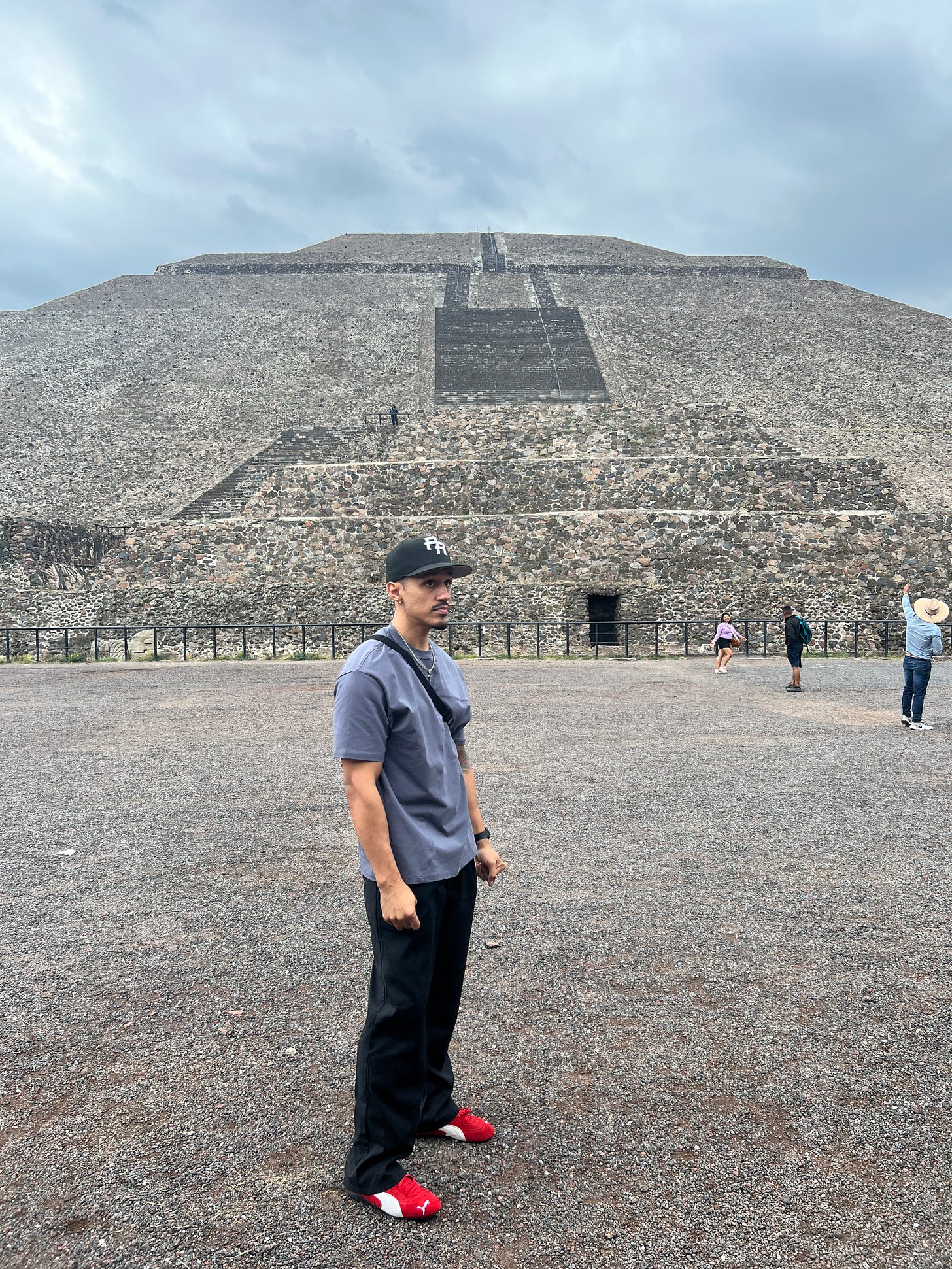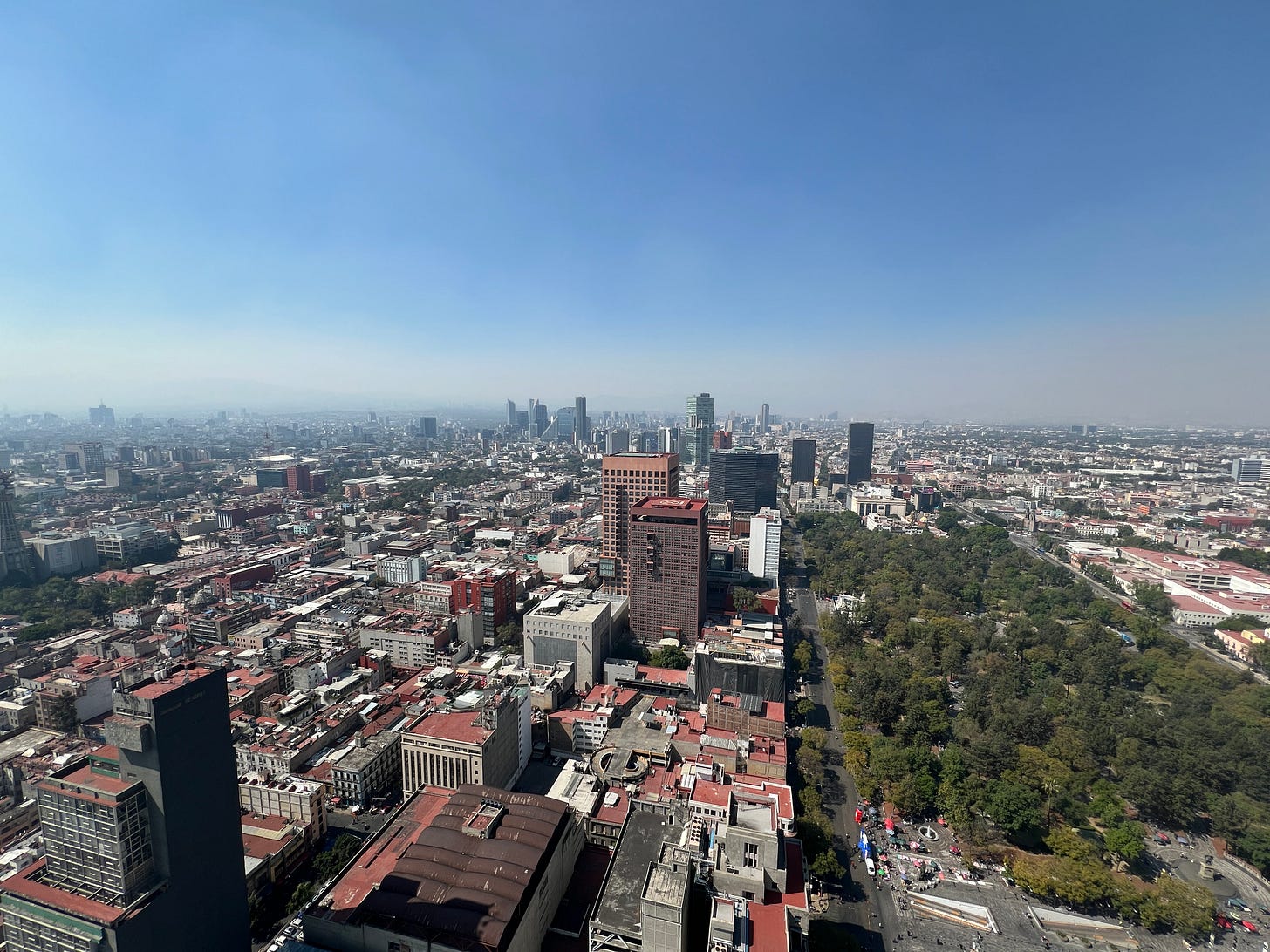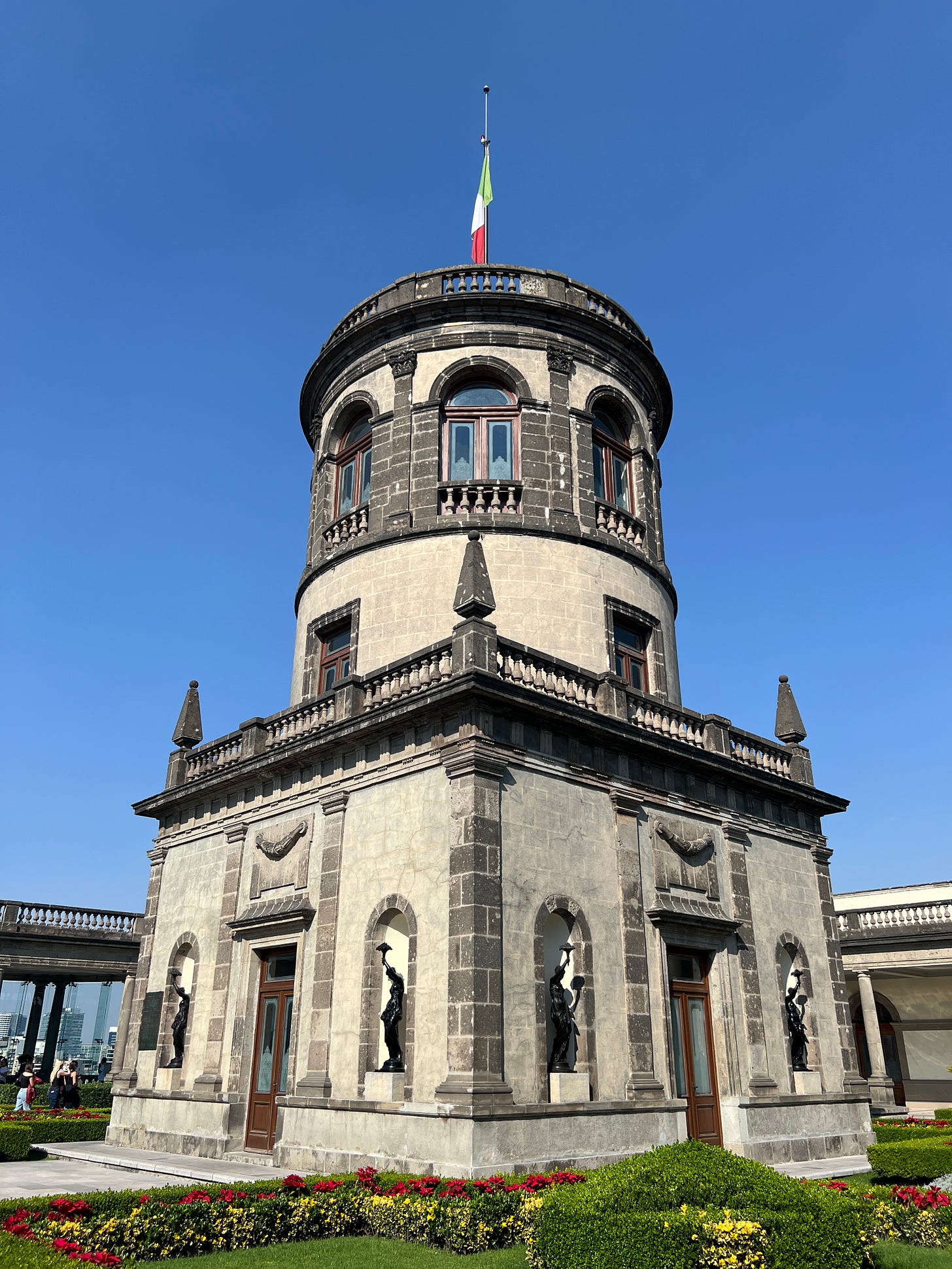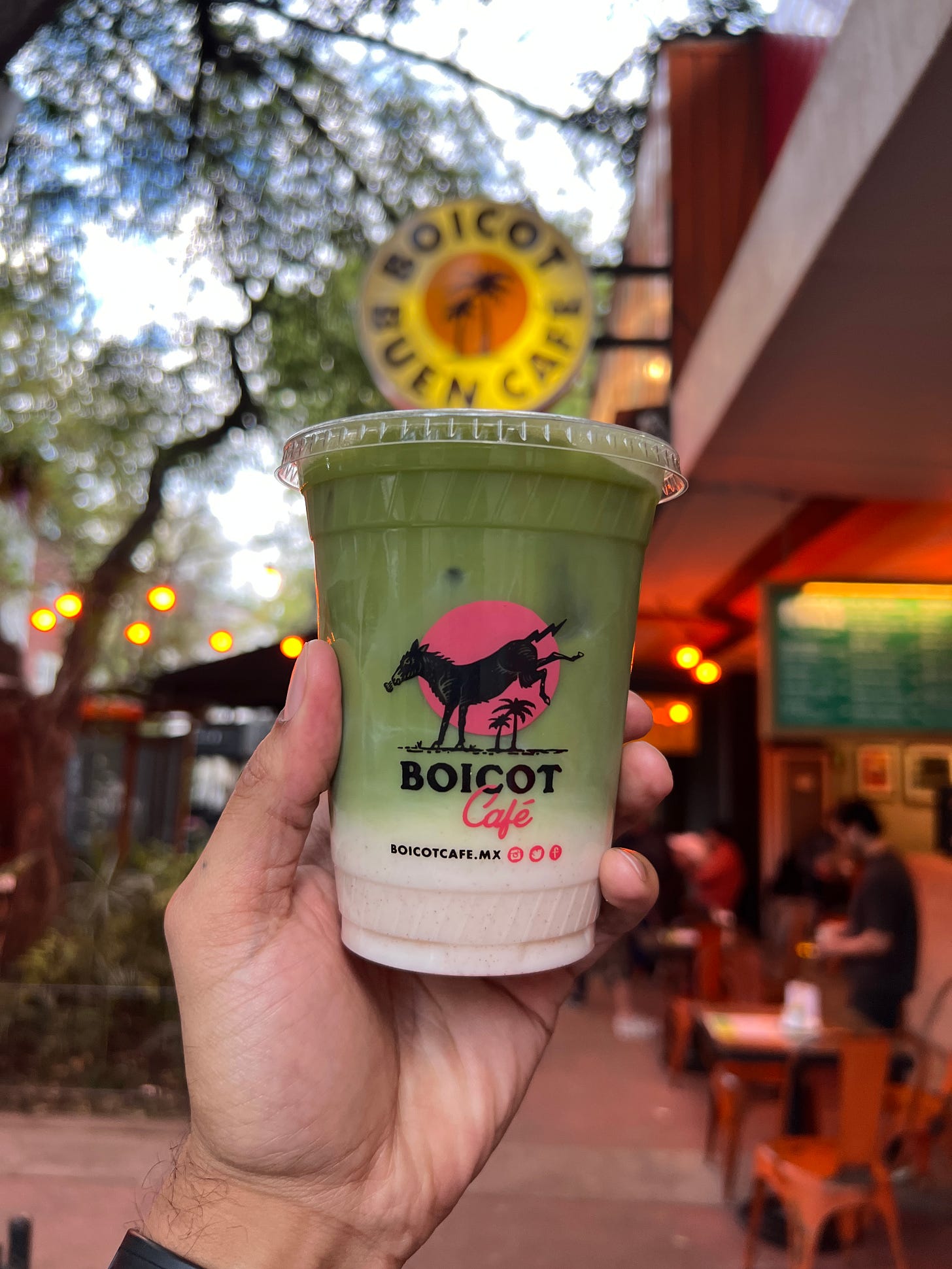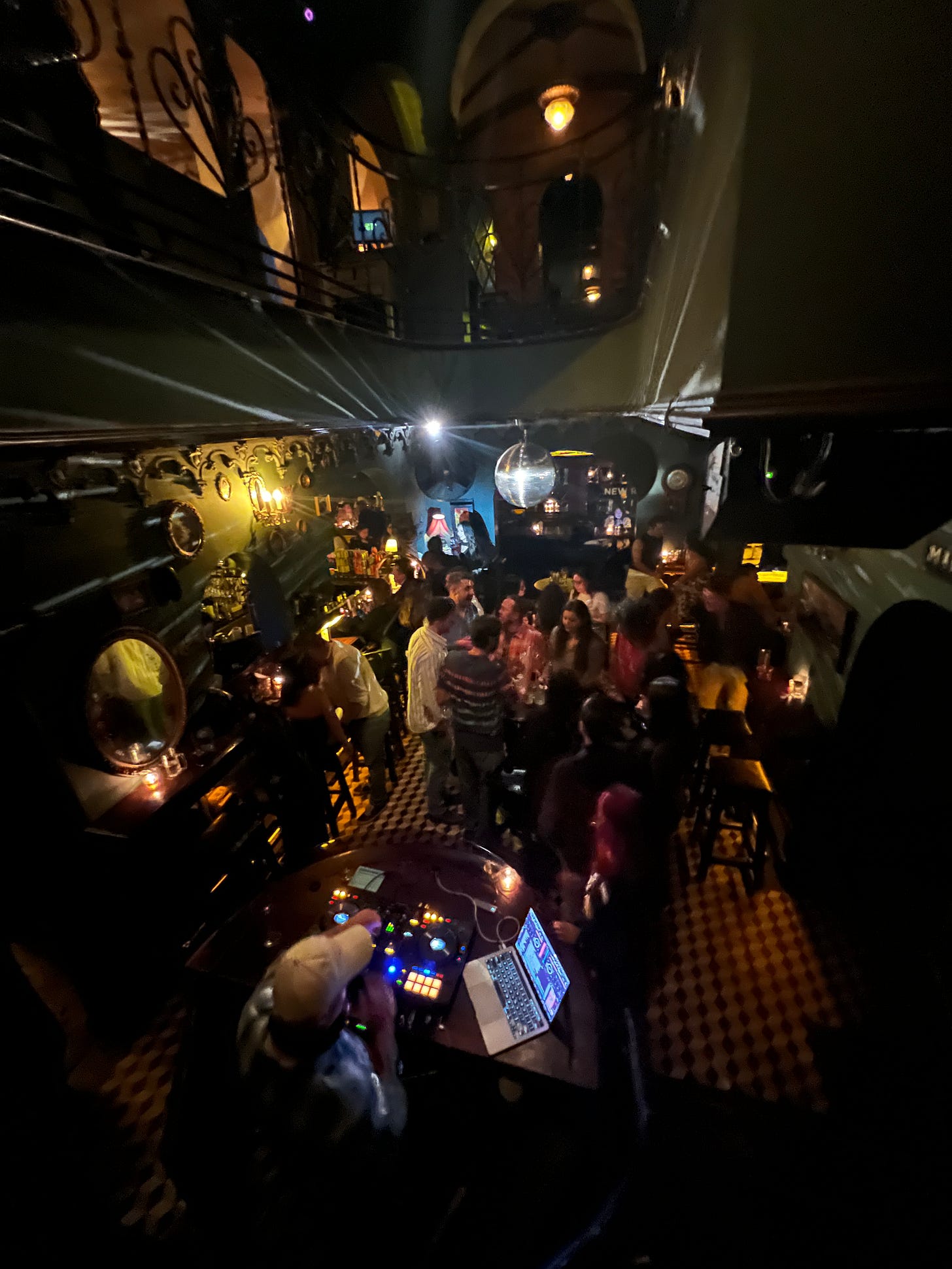One Month in Mexico City: A Full Recap
Cost of Living, Best Neighborhoods, Safety Tips, and Must-Do Experiences in CDMX
Spending a few days in Mexico City is enough to get a taste, but a full month? That’s where you really start to understand the vibe of the city.
With its chaotic energy, world-class food and deep cultural history, Mexico City (CDMX) is one of the most exciting metropolises on the planet. It’s a place where colonial-era streets meet modern skyscrapers, where four street tacos cost less than a three dollars and where every neighborhood has a distinct personality.
For travelers, digital nomads and expats alike, CDMX presents an exciting mix of opportunities and challenges. A short trip will show you the highlights—like eating tacos al pastor in Condesa or walking through Chapultepec Park—but a month lets you go deeper. It’s long enough to move beyond the tourist bubble, find your favorite local spots and experience both the highs and the frustrations of daily life in the city. Whether you’re considering it for an extended trip or as a base for remote work, knowing what to expect can make all the difference.
This blog post covers everything from:
✔ Cost of Living – One month’s budget living in CDMX.
✔ Best Neighborhoods – Where to stay for short and long-term visits.
✔ Food & Dining – The best eats and overrated spots.
✔ Safety & Transport – What’s the reality of getting around?
✔ Work & Lifestyle – Is Mexico City a great base for digital nomads?
By the end of this review, you’ll have a clear idea of whether Mexico City is the right place for your next adventure—or if it’s just another stop along the way.
First Impressions – The Energy of CDMX
The sheer size of Mexico City is overwhelming—urban sprawl stretches endlessly in every direction, the streets are packed with energy and life moves at a relentless pace. From the moment you arrive, it’s clear that this is a megacity with its own rhythm—one that blends history, culture,and modern chaos into a unique experience.
✔ Vibrant Culture Everywhere – Whether it’s the street musicians performing in the metro, the bold murals covering buildings, or the events in the historic center, culture isn’t something you seek out in Mexico City—it surrounds you.
✔ Familiarity in a Foreign Place – CDMX has a familiar feeling if you have been to the Los Angeles. From the layouts of many neighborhoods to the recognizable chain stores and cafés, there’s a level of convenience that makes adjusting easy.
✔ Welcoming and Friendly Locals – Despite being one of the largest cities in the world, CDMX still holds onto a sense of warmth. Locals are generally welcoming and open. Even small interactions—like chatting with the taquero at your go-to street stand—make you feel comfortable.
The Challenges: Big City Problems
🚦 Traffic is Relentless – If you plan on using Uber or taxis, prepare to spend a lot of time sitting in traffic. The metro is faster, but packed during rush hour. Even short distances can take longer than expected.
🌫 Pollution is Noticeable – The air quality in CDMX fluctuates, and on bad days, you’ll feel it. If you’re sensitive to pollution, staying in greener neighborhoods like Coyoacán or San Ángel might help.
💰 Small Inconveniences Add Up – Things don’t always run smoothly in CDMX. Many accommodations lack some modern appliances, tons of dog shit on sidewalks and service times and quality can vary wildly.
Breaking Down the Neighborhoods
Choosing where to stay can shape your entire experience, whether you’re looking for a trendy café scene, a historic district, or a quieter residential vibe. Here’s a breakdown of the areas I explored during my month in CDMX:
Roma & Condesa – Trendy, Walkable, and Full of Cafés
🛵 Vibe: Think of it as the "Brooklyn" of CDMX—bohemian, artsy, and full of digital nomads.
☕ What Stands Out: This is the epicenter of the city's café culture, with stylish coffee shops, boutique stores, and a growing international food scene. Parks like Parque México and Parque España make it feel green and livable.
📍 Best For: Expats, first-time visitors, people who want don’t speak Spanish well.
💰 Cost: Mid-to-high range for Mexico City—Airbnbs and rentals are in high demand.
Personal Take: If you want a balance of convenience, social life and livability, Roma and Condesa are some of the best areas to stay. That being said, they’re also expat bubbles, meaning you will mostly be around rich mexicans and foreigners.
Polanco – Upscale and Polished, But Pricey
🏙 Vibe: The “Beverly Hills” of CDMX—high-end shopping, luxury apartments, and Michelin-starred restaurants.
🍷 What Stands Out: If you love fine dining, Polanco is where you’ll find some of Mexico City’s top-tier restaurants, like Pujol and Quintonil. The area is extremely safe and well-maintained, with modern infrastructure and a more international crowd.
📍 Best For: Expats with a high budget, business travelers, luxury seekers.
💰 Cost: High—rent and restaurants are some of the most expensive in the city.
Personal Take: Polanco is incredibly clean, polished and upscale. It’s a great place to visit, but for long-term stays, it might feel too isolated from the city’s energy.
Centro Histórico – History, Culture, and Chaos
🏛 Vibe: The cultural and historical heart of CDMX—where the city’s colonial past meets its fast-paced present.
📸 What Stands Out: Zócalo, Palacio de Bellas Artes, Templo Mayor—some of the city's most iconic landmarks are here.
📍 Best For: History buffs, budget travelers, short-term stays.
💰 Cost: Budget-friendly, with cheaper accommodations and street food.
Personal Take: Centro Histórico is fascinating but overwhelming. During the day, it’s buzzing with energy and full of must-see landmarks. At night, some areas can be unsafe for some, so it’s not the best option for long-term stays.
Narvarte Poniente – A More Local, Laid-Back Alternative
🏡 Vibe: A quieter, more residential neighborhood with a local feel—no tourist crowds, but still plenty to do.
🌮 What Stands Out: Narvarte is famous for its taco scene—some of the best al pastor in the city is found here. It’s also much more affordable than Roma or Condesa, making it a solid choice for long-term stays.
📍 Best For: Digital nomads looking for a quieter area, food lovers, long-term living.
💰 Cost: More affordable than Roma/Condesa, with better value on rent and food.
Personal Take: If you want a balance of affordability, local culture, and good food, Narvarte is a hidden gem. You won’t find the same number of trendy cafés, but it’s a solid long-term base.
Cost of Living for One Month in Mexico City
🏡 Accommodation: Rent Costs in Different Neighborhoods
Rent is the biggest variable in your budget. Prices vary significantly based on location, amenities, and rental type (Airbnb vs. long-term lease).
Roma/Condesa – $900–$1,800 USD/month for a 1-bedroom apartment. Airbnb rates are even higher.
Polanco – $1,500–$3,000 USD/month for a luxury unit. One of the priciest areas in the city.
Centro Histórico – $500–$1,000 USD/month, but the area can be chaotic.
Narvarte Poniente – $700–$1,500 USD/month, great value for a quieter, more local feel.
💡 Tip: If you’re staying long-term, renting directly from a landlord instead of through Airbnb can save you 30-50% on rent.
🍽 Food & Dining: Street Food vs. Sit-Down Restaurants
Mexico City is a foodie paradise, and you can eat well on any budget.
Street Food (Tacos, Quesadillas, Tlacoyos, Tamales) – $1–$3 per meal.
Casual Restaurants & Fondas (Local Set Menus) – $4–$8 per meal.
Mid-Range Dining (Sit-Down Restaurants) – $10–$20 per meal.
High-End Dining (Fine Dining, International Cuisine) – $40–$100+ per meal.
💡 Tip: Mexico City’s fondas (small family-run eateries) serve daily set menus for $4–$7, making them one of the best budget-friendly ways to eat.
🚇 Transportation: Metro, Uber, and Walking
Getting around Mexico City is cheap and efficient if you use public transportation.
Metro (Subway) – $5 MXN (~$0.30 USD) per ride, the cheapest way to move around.
Metrobus (BRT System) – $6 MXN (~$0.35 USD) per ride.
Uber/Didi – $3–$7 USD for most short rides, but surge pricing can increase costs.
ECOBICI (Bike Rentals) – $5 USD for a 7-day pass.
💡 Tip: Avoid rush hour (7–9 AM and 6–8 PM) on the Metro. It gets extremely packed.
🎭 Entertainment & Activities: Museums, Nightlife, and Events
There’s no shortage of things to do in CDMX, whether you love history, nightlife, or live music.
Museums (Frida Kahlo, Anthropology, Soumaya, etc.) – $5–$12 USD per entry.
Lucha Libre (Mexican Wrestling) – $5–$40 USD per ticket.
Nightlife (Clubs, Rooftop Bars) – Cover charge of $10–$20 USD, plus drinks at $4–$10 USD each.
Concerts & Festivals – Prices vary, but expect $30–$100 USD for major events.
💡 Tip: Many museums offer free entry on Sundays, making it the perfect day to explore on a budget.
💰 Total Monthly Budget: Breakdown of Costs for a Comfortable Stay
Here’s an estimated monthly budget for a digital nomad or long-term traveler in Mexico City.
Total Monthly Cost in USD:
Budget ($) $850–$1,650
Mid-Range ($$) $2,000–$3,300
High-End ($$$) $4,000+
Food & Coffee Scene – The Best and Worst of CDMX
Mexico City is a food lover’s paradise, blending rich traditional flavors with modern culinary innovation. From street-side taco stands to upscale restaurants, the variety is endless. And if you're a coffee enthusiast, the city's café culture is just as impressive. After a month of exploring, here’s my breakdown of the best and worst of CDMX’s food and coffee scene.
🌮 Food Highlights: Must-Try Dishes
If you visit Mexico City, these are the essential foods you need to try:
Tacos al Pastor – Pork marinated in adobo, cooked on a vertical spit, and served with pineapple, cilantro, and onions.
Gringas – A variation of al pastor tacos, but in a flour tortilla with melted cheese. A little heavier, but insanely delicious.
Enchiladas – Corn tortillas rolled and stuffed with chicken, beef, or cheese, then covered in green or red salsa. The perfect comfort food.
Pozole – A hearty hominy stew, typically made with pork or chicken, garnished with shredded lettuce, lime, and oregano. Ideal for a chilly night.
Tamales – Corn masa stuffed with various fillings, wrapped in corn husks, and steamed. A breakfast staple best paired with atole.
Churros – Deep-fried dough covered in cinnamon sugar, best enjoyed with thick hot chocolate at places like El Moro.
Bakeries & Pan Dulce – Mexico City’s bakeries offer an incredible selection of pastries, from conchas (sweet bread) to orejas (puff pastry).
🍽️ Best Restaurants & Cafés for Every Budget
CDMX has options for every price point, whether you're looking for street food, a casual local spot, or an upscale dining experience.
Budget (Under $5 USD per meal)
El Vilsito – Legendary tacos al pastor, one of the best in the city.
Taquería Los Cocuyos – Small taco stand in the historic center, known for suadero tacos.
Fonda Margarita – Classic Mexican breakfast spot with home-cooked meals.
Mid-Range ($5–$20 per meal)
Lalo! – Great for brunch with solid coffee and fresh-baked bread.
Contramar – Famous for seafood tostadas and their grilled fish (pro tip: get the tuna tostada).
Páramo – A hidden gem for late-night tacos and cocktails.
High-End ($20+ per meal)
Pujol – One of the best restaurants in Latin America, known for elevated Mexican cuisine.
Sud777 – A modern take on traditional flavors with an incredible tasting menu.
Quintonil – Michelin-starred and ranked among the world’s best restaurants.
☕ Best Coffee Shops: Where to Work & Sip
CDMX has an underrated coffee scene, with great options for both work and relaxation.
Café Nin – Cozy, beautiful interiors, solid Wi-Fi, and some of the best pastries in the city.
Blend Station – A digital nomad hotspot with strong coffee, lots of seating, and outlets.
BUNA – Specialty coffee spot that roasts its own beans and serves an amazing flat white.
Boicot Café – A casual, artsy vibe, perfect for getting work done.
Chiquitito Café – Small but great for an afternoon espresso.
🤔 The Worst Food Experiences?
Not every meal was a hit. Here are a few things that didn’t live up to the hype:
Overpriced tourist traps – Some restaurants in high-traffic areas (like Polanco or Centro) charge way too much for mediocre food.
Tortas that were all bread, no flavor – Some street vendors serve dry, underwhelming sandwiches that don’t match the hype.
Americanized Mexican food – If a place caters too much to foreigners, expect overpriced and watered-down flavors.
Work Life in CDMX
Mexico City isn’t just a great place for food and culture—it’s also an emerging hotspot for remote workers and digital nomads. But how does it actually stack up when it comes to working remotely?
💻 Internet Speed & Reliability
One of the biggest concerns for remote workers is internet reliability. Here’s what to expect in Mexico City:
Average Speeds: Wi-Fi speeds in CDMX vary widely depending on location. Most coworking spaces and cafés offer speeds between 50–200 Mbps, which is more than enough for video calls, streaming, and heavy workloads.
Cafés vs. Coworking Spaces: While many coffee shops have solid internet, some limit plug access or discourage long stays. Coworking spaces are a better option for consistency.
🤝 Networking & Community – Is There a Nomad Scene?
CDMX has a growing community of expats and remote workers, making it easier to meet like-minded people and build connections.
Where to Find the Digital Nomad Crowd:
Coworking Spaces – Popular choices include WeWork, Impact Hub, and Selina, offering fast Wi-Fi, comfortable work environments, and networking events.
Cafés with Work-Friendly Vibes – Spots like Blend Station and Café Nin are well-known among nomads for their relaxed atmospheres.
Expat & Nomad Meetups – Events hosted via Facebook Groups, Meetup.com, and WhatsApp communities are great for networking.
⚖️ Work-Life Balance in CDMX
One of the best things about working remotely in Mexico City is the balance between productivity and lifestyle. You can start your morning in a coworking space, take an afternoon taco break, and wrap up your day at a rooftop bar in Roma Norte.
Safety & Navigating Mexico City: What You Need to Know
Mexico City has a mixed reputation when it comes to safety, but the reality is more nuanced than the headlines suggest. Like any large city, it has safe areas, places to avoid, and general precautions that can make all the difference.
🚨 General Safety Tips: Common Concerns & Realities
While CDMX is generally safe for travelers, there are a few things to keep in mind:
Pickpocketing is the biggest risk – especially in crowded areas like Centro Histórico, the Metro, or major tourist attractions. Keep your phone and wallet secured.
Avoid somes areas at night – Stick to neighborhoods like Roma, Condesa, Polanco, and Coyoacán after dark. Avoid Tepito, Iztapalapa, and certain parts of Centro late at night.
Cash Awareness – Many places still operate on cash, but withdraw money inside bank ATMs instead of standalone ones on the street.
🚶 Solo Travel Experience: Is CDMX Safe for Solo Travelers?
For Solo Male Travelers:
CDMX is relatively easy and safe to navigate alone, especially if you stay in well-trafficked neighborhoods.
Avoid getting too comfortable in unfamiliar areas or venturing too far after drinking—CDMX is fun, but like any big city, staying aware is key.
For Solo Female Travelers:
Harassment can happen, but sticking to safe areas, using Uber at night, and walking with purpose minimizes risks.
The women-only Metro cars during peak hours provide an extra layer of security.
Overall: Most solo travelers have great experiences in CDMX, but the key is being mindful of your surroundings, especially at night.
🚕 Public Transport vs. Uber: What’s the Best Way to Get Around?
Mexico City has a lot of transportation options, but some are safer and more convenient than others.
🚇 Metro (Subway)
✅ Super cheap ($5 MXN per ride)
✅ Fastest way to avoid traffic
❌ Extremely crowded during rush hours (pickpockets are common)
❌ Not recommended late at night
🚍 Metrobús (BRT System)
✅ Efficient and safer than the Metro
✅ Runs on dedicated lanes, avoiding traffic
❌ Can be packed during peak hours
❌ You need a MetroCard to ride
🚖 Uber / Didi / Cabify
✅ Most convenient and safest option at night
✅ Affordable compared to U.S. prices
✅ Good for getting home after a night out
❌ Surge pricing can make it expensive during peak times
🚖 Taxis (Use with caution)
❌ Avoid hailing taxis from the street – use authorized Sitio taxis or apps like Uber instead.
❌ Scams happen, like charging outrageous fares or claiming they have no change.
🚶♂️ Walking
✅ Safe in areas like Roma, Condesa, Polanco, and Coyoacán
❌ Sidewalks can be uneven, and traffic is aggressive—watch out for cars
❌ Not recommended late at night outside of safe zones
Things to Do – Exploring CDMX in a Month
Spending a month in Mexico City means you have time to go beyond the tourist checklist and truly experience the city’s depth. From historic landmarks to vibrant nightlife and hidden gems, here’s how to make the most of your time.
🏛️ Historical Sites & Museums
Mexico City is packed with history, and its museums and cultural sites are among the best in the world.
Zócalo & Centro Histórico – The beating heart of CDMX, home to the Metropolitan Cathedral, Templo Mayor, and the National Palace (where you can see Diego Rivera’s murals).
Palacio de Bellas Artes – A stunning white-marble palace showcasing art, ballet, and opera performances.
Chapultepec Castle – The only castle in North America that housed royalty, sitting atop Chapultepec Hill with breathtaking city views.
Museo Nacional de Antropología – A must-visit to understand Mexico’s indigenous history and see the famous Aztec Sun Stone.
💡 Pro Tip: Many museums offer free entry on Sundays, but expect crowds.
🚗 Day Trips & Excursions
A month in CDMX gives you time to explore outside the city. Here are the best day trips:
🏺 Teotihuacán Pyramids – Just an hour outside CDMX, this ancient city is home to the Pyramid of the Sun and Moon. Arrive early to avoid crowds and the midday heat.
🌿 Xochimilco Canals – A colorful, festive boat ride through historic canals. Grab a trajinera, bring drinks, and hire a mariachi band for the full experience.
🌊 Tolantongo Hot Springs – A surreal blue-water hot spring surrounded by caves and waterfalls, about 4 hours from CDMX.
💡 Pro Tip: For Teotihuacán, go early (before 9 AM) and bring sunscreen—there’s no shade!
🌃 Nightlife & Social Life
CDMX has a nightlife scene for every vibe—whether you’re into mezcal bars, rooftop lounges, or underground clubs.
Roma & Condesa – The best spots for cocktail bars, live music, and laid-back lounges. Try Licorería Limantour or Handshake Speakeasy.
Polanco – More upscale, with trendy clubs like Janis or Republica.
Centro Histórico – Classic cantinas, traditional mariachi bars, and wild clubs—check out La Ópera or Patrick Miller for an unforgettable experience.
Lucha Libre Nights – A MUST-DO in CDMX. Head to Arena México for a wild, high-energy wrestling experience.
💡 Pro Tip: Ubers are cheap and the safest way to get home after a night out.
🕵️♂️ Hidden Gems – Unique Spots Beyond the Tourist Trail
CDMX rewards those who dig deeper. If you have a month, explore beyond the obvious:
Biblioteca Vasconcelos – A futuristic, maze-like library that looks straight out of Inception.
La Casa Azul (Frida Kahlo’s House) – Skip the usual museums and get a personal look into Frida’s life and art.
San Juan Market – A local market known for exotic meats, artisanal cheeses, and authentic Mexican ingredients.
💡 Pro Tip: Many of these spots aren’t on typical tourist maps—ask locals, check out Xiaohongshu for hidden spots, or just wander!
Conclusion – One Month in CDMX
Spending a month in Mexico City gave me a deeper look into what it’s like to live here beyond just visiting. The food, culture, and energy make it a top-tier city, here’s a final breakdown.
Who Would Love CDMX? (And Who Might Not?)
CDMX is great for you if…
✔️ You love big-city energy with a mix of history, modernity, and street culture.
✔️ You enjoy walking, biking, and using public transport over driving.
✔️ You’re a foodie—seriously, the street food alone makes the city worth it.
✔️ You thrive in social, vibrant environments and love meeting new people.
✔️ You work remotely and want a culture-rich international base.
CDMX might not be for you if…
❌ You hate big cities and need a quiet, slow-paced environment.
❌ You’re sensitive to air pollution or altitude (the city sits at 7,300 feet).
❌ You need absolute safety and stability—CDMX is exciting but can be unpredictable.
❌ You rely on flawless infrastructure—while improving, some systems (power, water, WiFi) aren’t always reliable.
Spending a month in Mexico City gave me the chance to truly experience its highs and lows beyond just the usual tourist spots. CDMX is chaotic, colorful, overwhelming and exhilarating all at once—a city where history meets modern life, where street food can rival fine dining, and where every corner has something new to explore.


